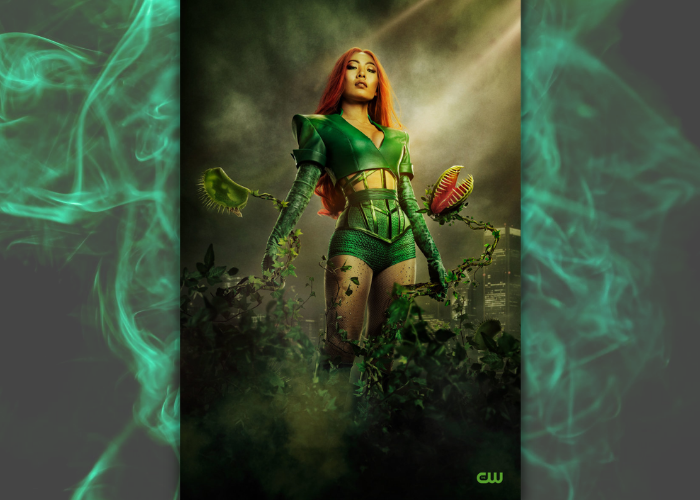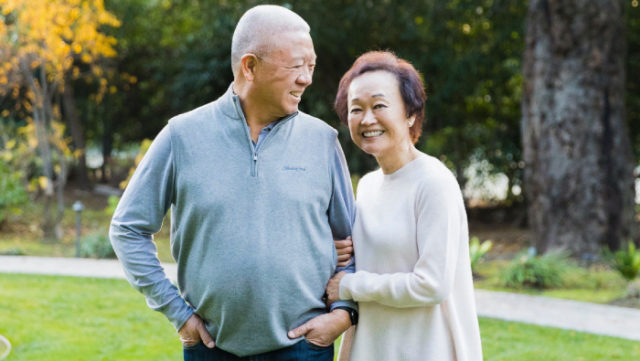We’ve all seen countless versions of the “damsel in distress” trope, but what happens when the damsel has had enough of being saved and wants to take her destiny in her own hands?
Nicole Kang, known for her roles as Sienna in the film “Ten Minutes to Midnight” and as Lynn on the hit series “You,” doesn’t need a hero. In fact, she’s embracing her inner villain these days as “Batwoman”’s Mary Hamilton transforms into The CW series’ Poison Ivy. The show’s third season returned last Wednesday, Jan. 12, and featured Mary facing off with her old allies and seizing her role as the newest member of Gotham’s Rogues’ Gallery.
Read our Q&A with Kang for a behind-the-scenes look into how she prepared for her new role as the iconic villain, and why she sees Mary’s transformation as an important step for AAPI representation.
Character: What was your thought process when you were told about Mary turning into Poison Ivy?
Kang: I was super excited. As an actor, you never want to feel like you’re doing the same thing over and over again. My favorite characters to watch are ones who journey from good to evil. Especially for Mary, she’s always being kidnapped; she’s running away. There’s a #ProtectMary because she’s always being taken to the brink of dying or being gone forever. She’s always been saved or saved herself, or found a way out of things because she’s super smart.
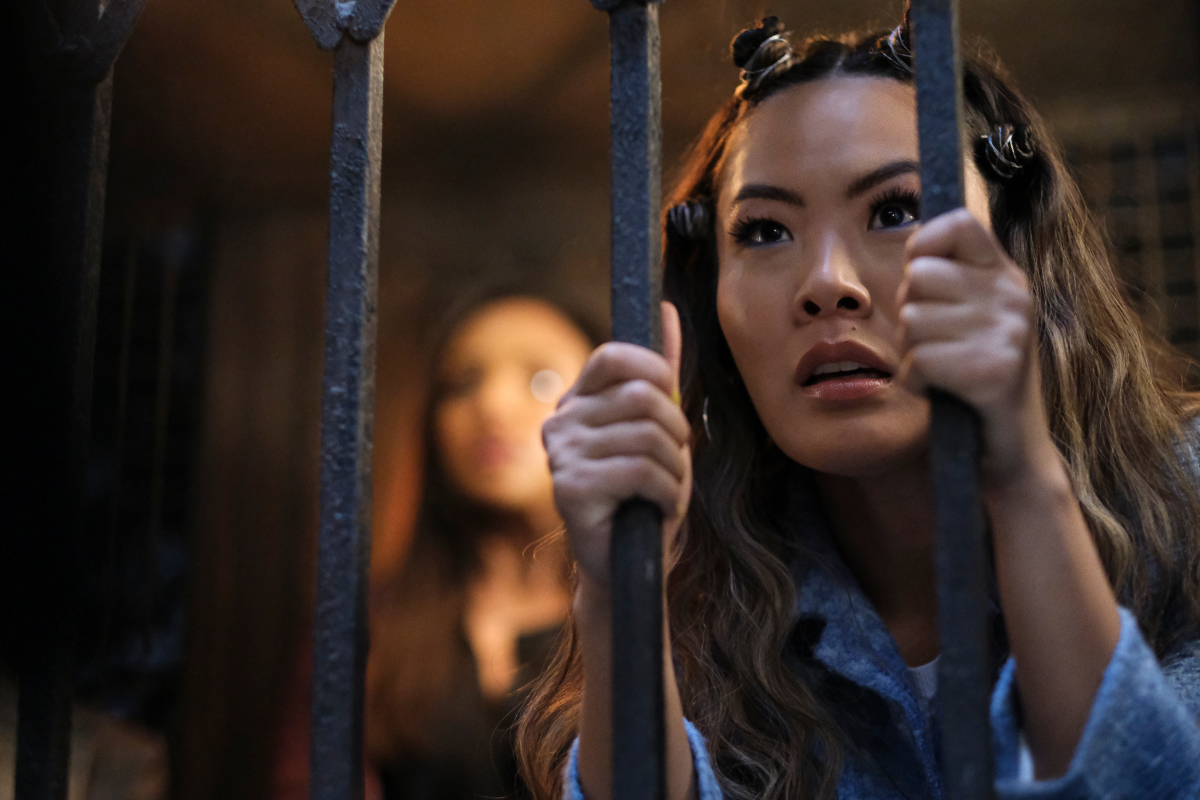
But when I heard Mary was going to transform into Poison Ivy, I thought, ‘Oh, my gosh, how am I going to do this?’ And then I thought, ‘Actually, this is so perfect. No one’s going to see it coming.’ She has a great origin story; she loses a parent by our series villain, her sister, which is so twisted. She continues to be lost, trying to figure out who she is. And in doing so, she gets a little bit overlooked and she feels like her voice isn’t being heard. She becomes the perfect host for Poison Ivy, because she’s vulnerable in all of the right ways.
I read an interview where you talked about how you worked with your mom very closely to develop the doctor aspect of Mary’s character. What were some of your inspirations for her Poison Ivy side?
[Costume designer] Maya Mani did such a beautiful job; we looked at a lot of Mugler corsets from the ’90s. A lot of those runway shows were really inspirational to us. And I remember us sketching and finding the shade of green. We worked with a custom corset-maker from a company called Lace Embrace, which was so fun, and they really helped shape me. Getting in that corset, immediately, I’m like, ‘Oh, my God, I can’t breathe.’ But it really informed me, and I didn’t have to do much because I felt so different. I looked at myself in the mirror and I was like, ‘I look so scary. Will I be empathetic at all, will my emotions come through?’ So, I started with the body and had influences from actual nature. I watched a lot of waves, [how] an animal moves. I was incredibly inspired by the outdoors. Then it all came together. Now, I always have a playlist.
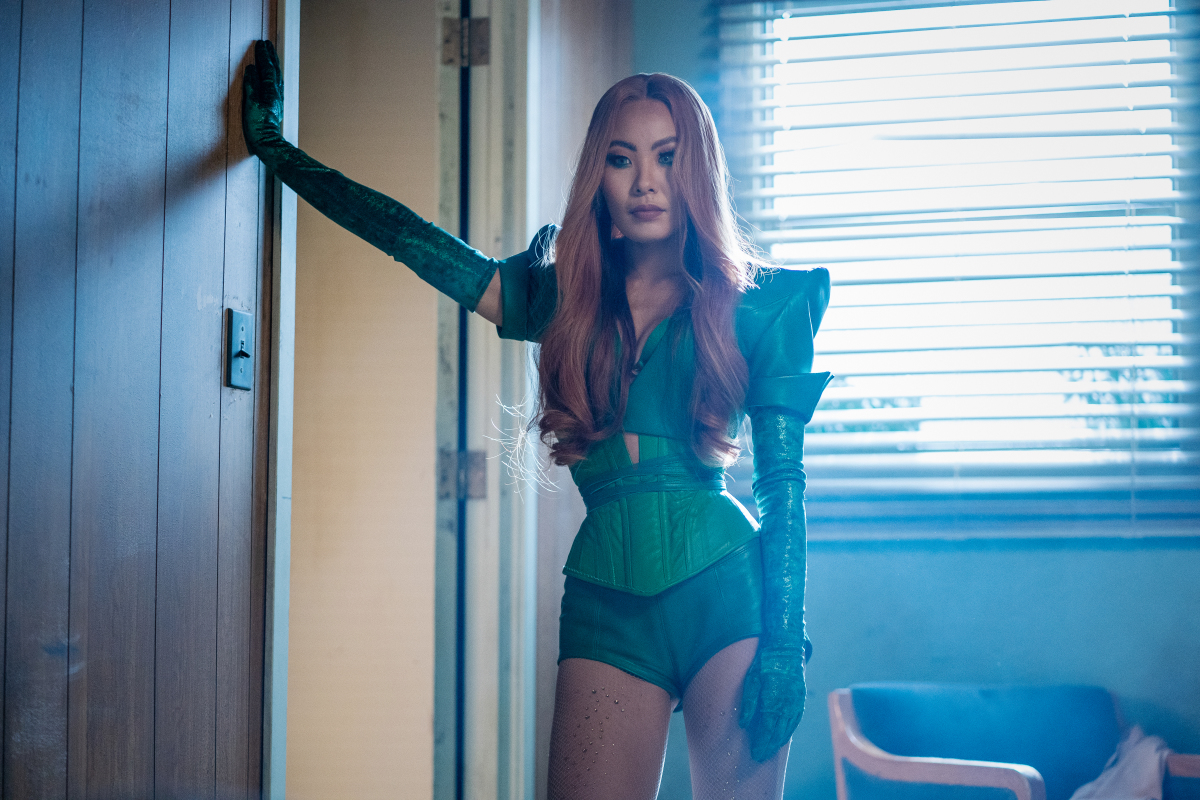
Since this is the first Asian American Poison Ivy we’ve seen, the wardrobe must have needed a major rework.
That was such a privilege that [series creator] Caroline [Dries] endowed on me: ‘You are going to become Poison Ivy,’ and then letting myself empower myself. Poison Ivy is a hyper-sexual character, especially in the comics. I’m an Asian woman, so I want to make sure I’m not a sexual object, because I’ve seen that before. You don’t want to be fetishized, so what does that mean? How do you do that?
I owe a lot to the writers’ room for being so creative, [to] think out of the box and not take those boundaries as, like, ‘Oh, well, we can’t really do Poison Ivy.’ But what are the other ways in which she can command power? Something much more current, exciting and intricate came out of that. That was definitely not just the costume, but the whole thing. You can pick any scene out where I am Poison Ivy, and I can talk to you about how I infuse our Asian-ness in it [so] it comes through in every tendril.
You mentioned earlier that Mary felt like she had to be quiet, and a lot of Asian women face similar issues. So, were there any personal experiences you felt you could build upon?
Tapping into it, anger feels so much more vulnerable sometimes than heartbreak or deep sadness. Anger is something I haven’t really explored. So I had to commit. I’m like, ‘Screw it, let’s go for it.’ And [I had] some great scene partners to hold that space. I always like starting before someone’s ready, or catching them off-guard and finding something really organic, and [Mary’s] anger was definitely a part of that.
I can tell the difference between when [anger] is put on and when it’s real. Yelling and screaming and volume is not an indication of real. As an Asian woman, yes, there are these patterns of being too quiet, too meek. But I would say Mary is not any of those things. She always has an opinion, she’s intelligent, she’s well-spoken, she’s confident. She’s all the things I always wanted to be. And yet, she still is overlooked. What does that say about what we are placing on top of an Asian woman?
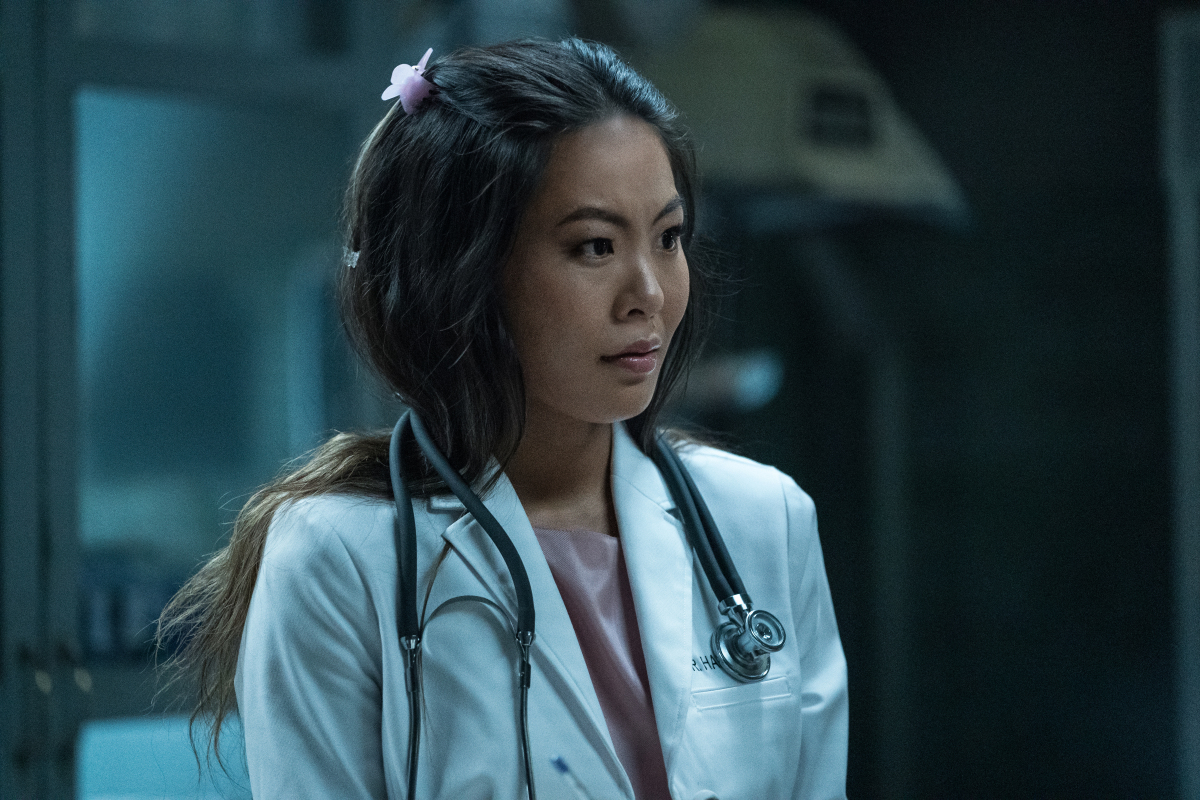
Were you anxious at all about fan reactions as Mary became Poison Ivy?
I’ll always be anxious. Even before the [first] picture dropped, I didn’t tell anyone in my cast it was coming, and it’s probably because I was so nervous. I try not to have any expectations. That’s a risk I’m willing to take, being part of this industry. If you ever enter into a canon as big as the ‘Batverse,’ that always comes. But it’s tingly; it’s like first-day-of-school nerves. When it came out, I was so grateful to our fans and the fans of Poison Ivy separately that came flooding in, and for all of the fan art that came after. I was extremely moved by all of that, and I still am not quite sure how to express how grateful I am.
I definitely had an identity crisis every single day on set, and the day it came out was no different. But everybody’s excitement and the overwhelming fan support have made me feel like, ‘Oh, yeah, we’re onto something.’ And now, I can’t wait for them to see what’s coming.
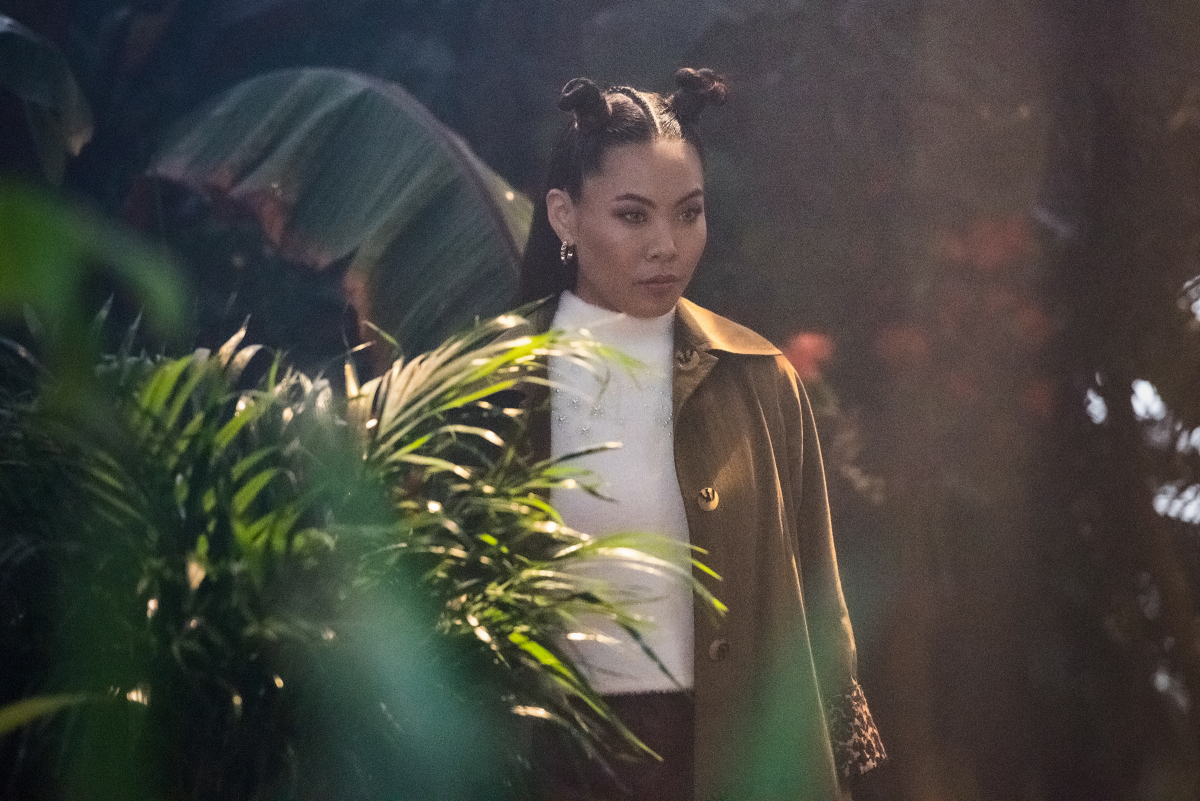
How do you hope this opens up AAPI representation as a whole?
My earliest memories of ‘Batman’ comics and movies are from my dad. My dad came from Korea, immigrated to Colorado and learned English by reading comics, so comic books are a really important part of my family history. Falling asleep every Friday night to another action or comic book movie, especially the ‘Batman’ movies, are my earliest and fondest memories with my father. I can imagine AAPI [and other] youths who are watching have the same stories of watching movies as a way to engage in American culture. So many immigrant stories ring true to that. It’s super cool that if somebody is flipping through the channels and they see somebody who looks familiar, playing a character they love, [they] can get behind this really iconic universe that their parents also remember. That’s really a part of weaving ourselves back into history and reimagining what Gotham has looked like all along.
How are you with plants? Do you love them as much as Poison Ivy, or are you on the opposite end of the spectrum?
So, the green thumb in all of this was Rachel [Skarsten]; she gave me my first plant that I killed. And she remembers, she’s like, ‘I took so much time on your birthday, the first moment that I met you,’ and I got it and I killed it. But then I moved into this family’s apartment that was furnished, and they had this huge snake plant that is at least 10 years old. It’s huge. And they were like, ‘Are you going to be able to take care of it?’ And I was like, ‘Yes.’ And because of that, I can do it. I took care of this plant. And it definitely turned things around for me. Especially playing this role, I’ve developed this green thumb. It has been a work in progress, I didn’t wake up loving plants or any of that. But yeah, to be honest, I killed every plant I had before this.
Catch Kang’s Poison Ivy on Wednesdays at 9 p.m. on The CW channel!


